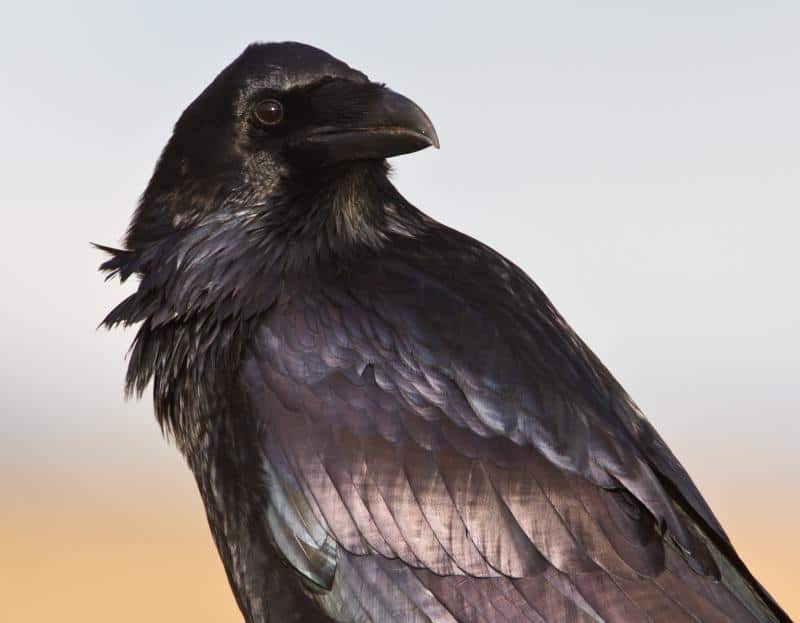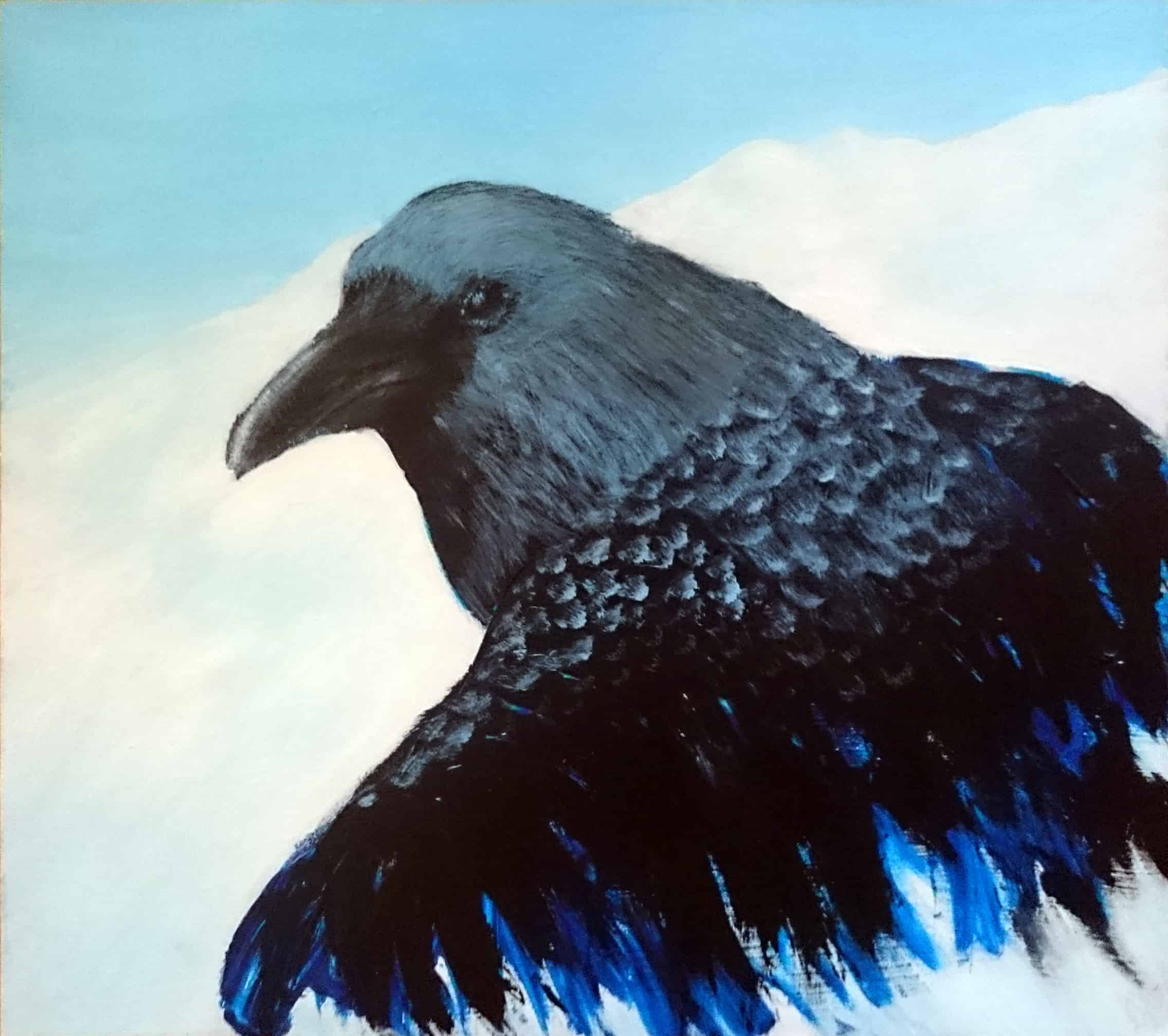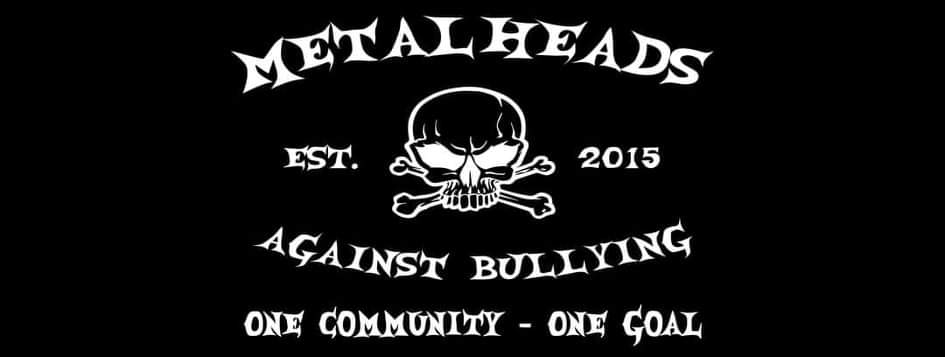Today, we’re digging into the myths and folklore surrounding the Raven. Thanks to Ina Mulvik for the suggestion 🙂
It has a wide distribution in the Northern Hemisphere and lives in many different habitats. It’s sometimes seen at sea level but tends to prefer higher elevations. Occasionally I see ravens fly over our house and it’s definitely a treat for me.
Their call is sometimes described as a long “croak”. The Swedish name for the raven, korp, comes from this sound.
The scientific family name for ravens and their relatives is Corvidae (a popular name for the group is Corvids). There are over 120 species in the family, including ravens, crows and magpies, and the raven is the largest of them all exceeding 1,4 kgs (3.1 pounds) and 65 cm (26 in).
They can live up to 21 years in the wild, so they hang around for quite a while longer than some other birds.
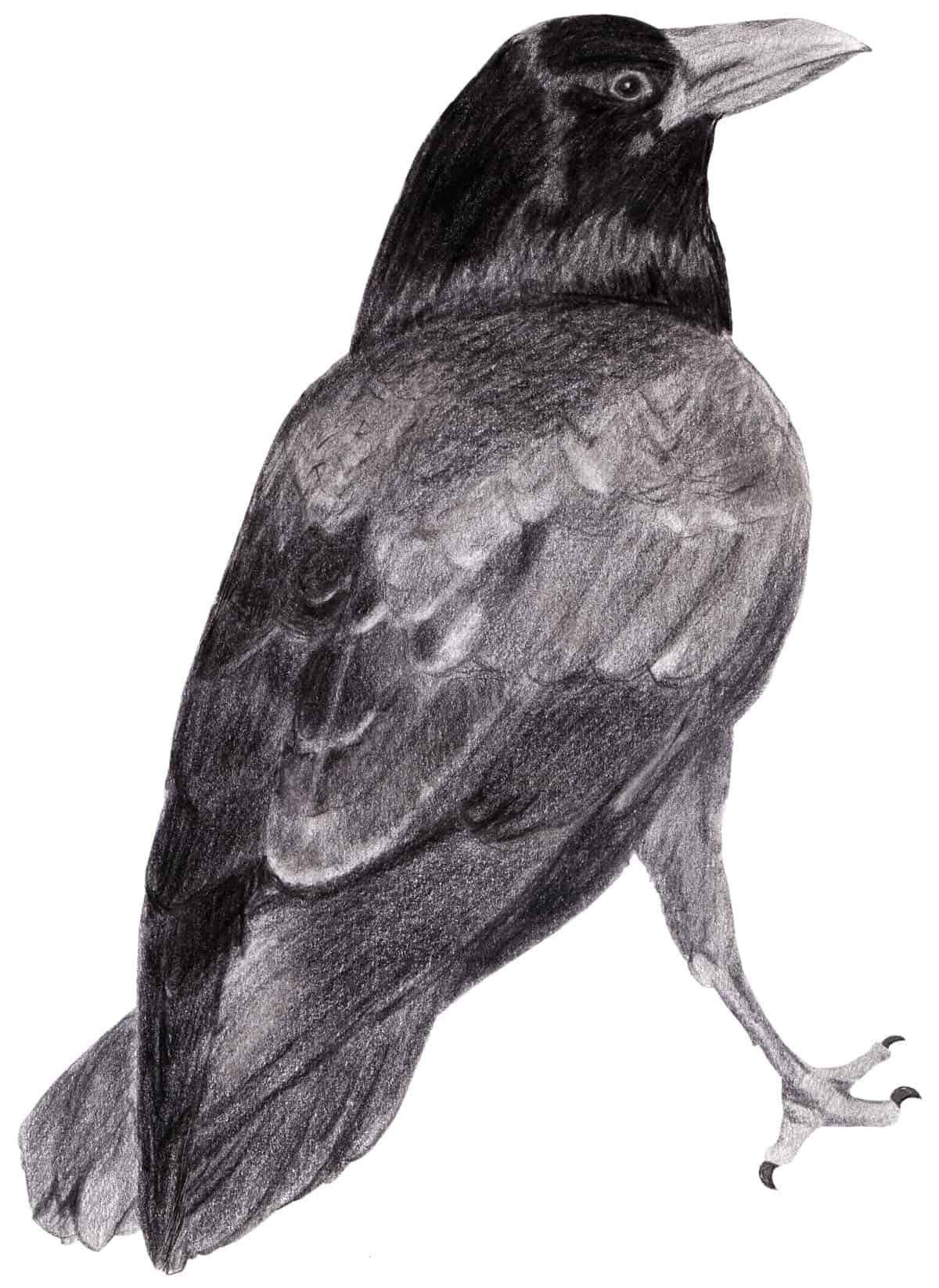
Will’s Raven, a pencil and coloured pencil drawing by Linda Ursin
In many cultures, it’s seen as a symbol of death and battle and as a harbinger of doom and destruction. There’s also a common notion in modern European culture that the main attribute is their connection with the ‘other side’. The association probably comes from its tendency to eat carrion, which would be available in large amounts after a battle. This has, unfortunately, lead to it being persecuted and killed in large numbers through the years.
Ravens are actually omnivores. They’re not exclusively scavengers eating food scraps or carrion eaters, given the opportunity, they’ll also eat insects, cereal grains, berries, fruit, and small animals.
A fascinating and intelligent bird, modern experiments have shown that they can count up to 8 and solve pretty complex problems. It can mimic sounds and even learn to speak human. It really got a bum rap because of myths and folklore. Let’s get to the stories about the raven.
Mythology featuring Ravens
In Norse mythology, we have Huginn and Munin, the ravens of Odin. Each day the ravens fly out from Hliðskjálf and brought news from Midgard back to Odin.
The 9th-century poem Hrafnsmál describes a meeting between one of the Valkyrie and a raven where they discuss the life and exploits of Haraldr hárfagri, the first king of Norway.
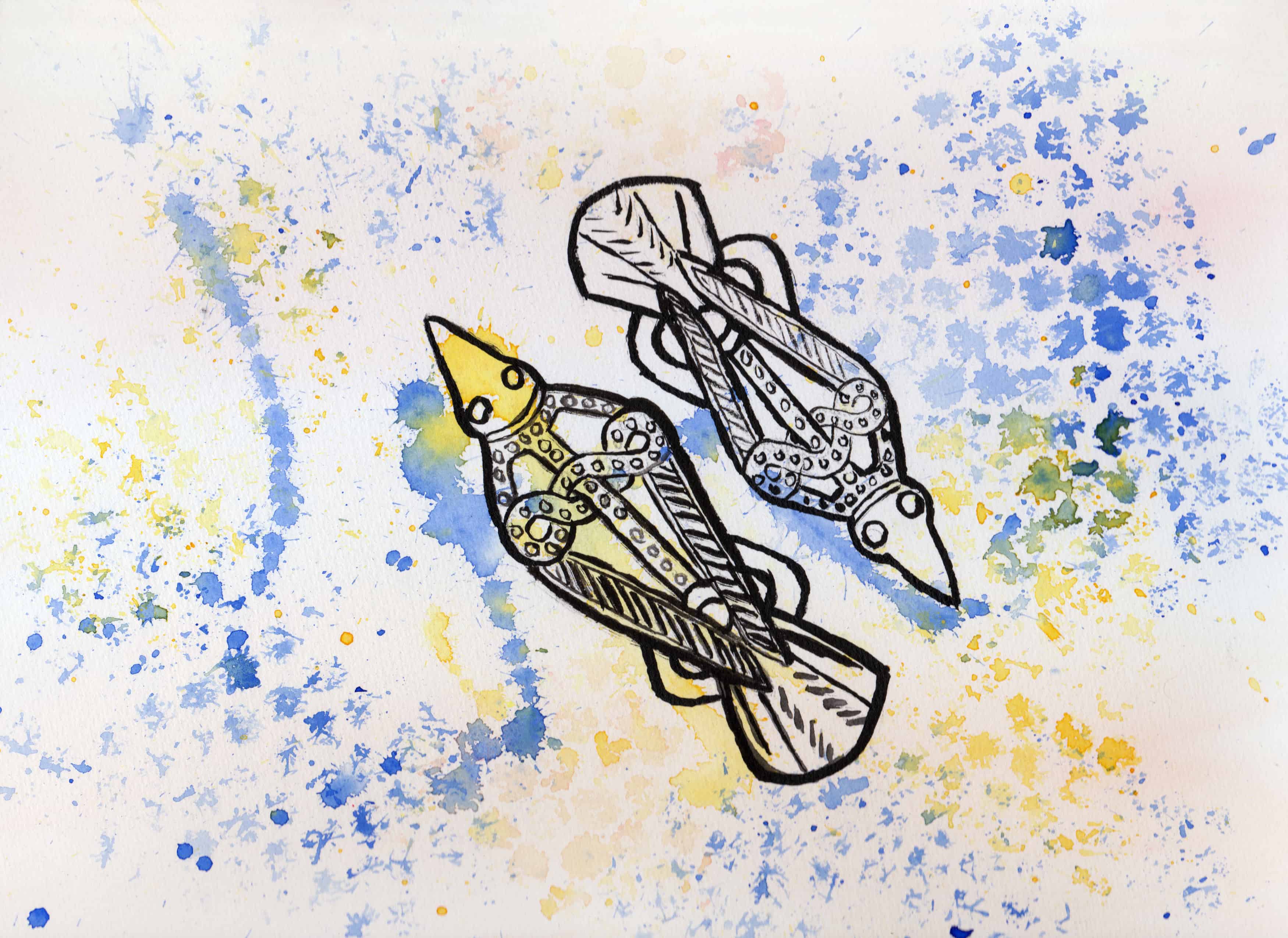
Hugin and Munin, watercolour painting by Linda Ursin
The 13th-century poem Sólarljóð (“The Song of the Sun”) speaks of the Ravens of Hel, who tear out the eyes of those who answer back.
In Irish mythology, ravens are associated with warfare and the battleground in the figures of Badb and Morrígan. They were also associated with the Welsh god Bran the Blessed.
Morrigan took the shape of a raven while acting as “Chooser of the Slain” and the protector of warriors at the battlefields.
Ravens were the favourite birds of the god Lludd, the Celtic god of artists and artisans. He was said to have two ravens to attend to all of his needs.
Raven Emerging, acrylic painting by Linda Ursin
In Greek mythology, the bird is associated with Apollo. They were the god’s messengers in the mortal world and a symbol of bad luck. Apollo sent a white raven (or crow) to spy on his lover, Coronis. When it brought back the news that Coronis had been unfaithful, Apollo scorched the it in anger, turning the animal’s feathers black. That’s said to explain why (almost) all ravens are black today.
The raven is the first species of bird to be mentioned in the Hebrew Bible as the bird Noah sent to check if the water had receded.
In the Quran version of the Cain and Abel myth, a raven is said to be the one who taught Cain how to bury his brother.
The Hindu deity Shani is often depicted as mounted on a giant black raven or crow.
Ravens appear in several traditional Serbian epic poems. Like in many other cultures, they’re associated with death, specifically with an aftermath of a bloody or significant battle.
These birds are also prominent in the mythologies of the Indigenous peoples of the Pacific Northwest Coast. It’s seen as the Creator of the world, but it’s also considered a trickster god.
Folklore about Ravens
According to legend, the Kingdom of England will fall if the ravens ever leave the Tower of London. Today, ravens are still kept at the Tower, with their wings clipped (just in case). During World War II, Tower Hill was bombed, and all but two ravens were killed. These two ravens later left, one after the other. Winston Churchill ordered them to be replaced and new ones were brought from the Welsh hills and the Scottish Highlands.
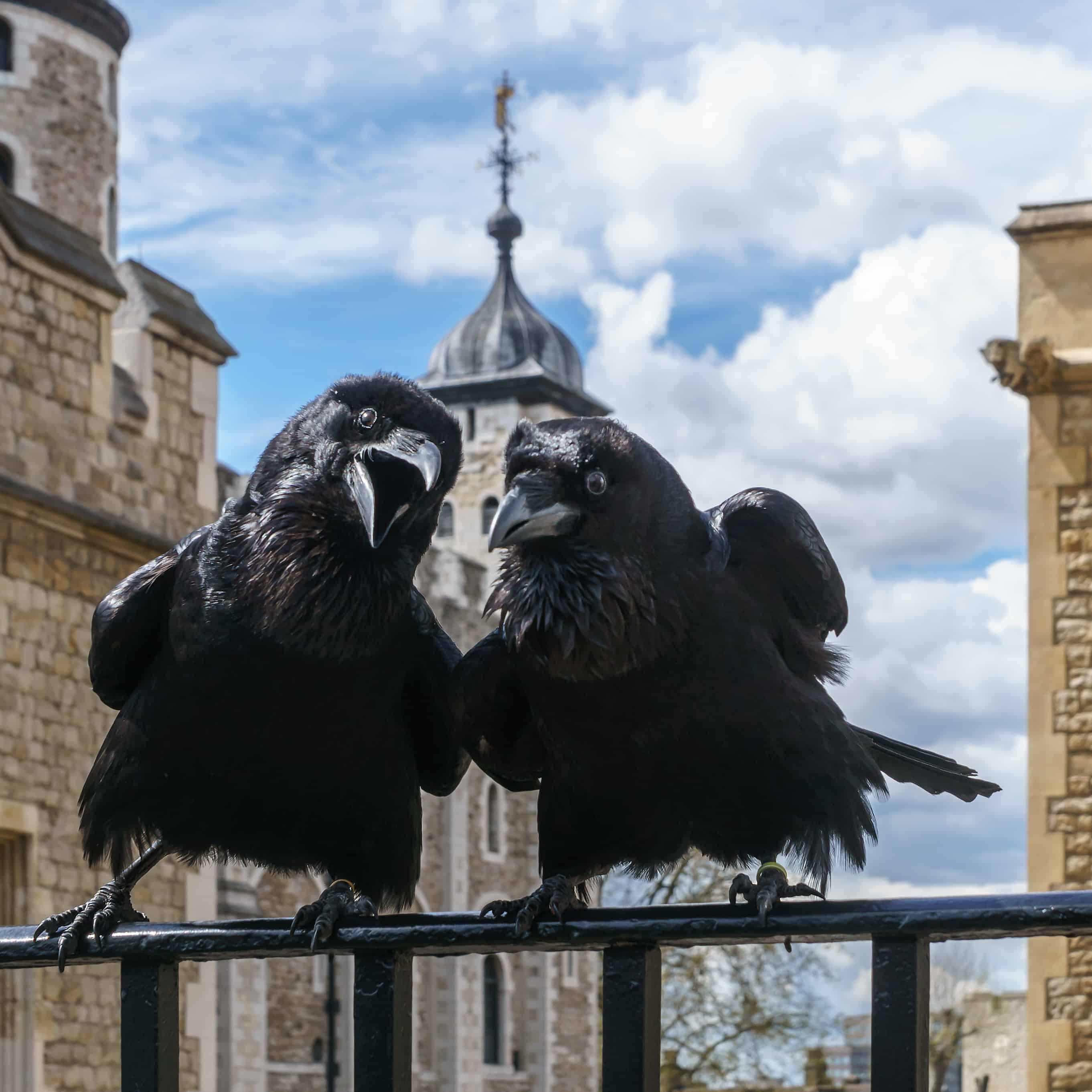
Jubilee and Munin, Ravens of the Tower of London
Photo by Colin, Wikimedia Commons
“To have a raven’s knowledge” is an Irish proverb meaning to have the powers of a psychic.
Irish and Scottish Banshees can take the form of ravens. A raven calling over the roof of a house was considered to be an omen of death for the occupants.
In Swedish folklore, hearing a raven crow from the left is considered a bad omen, especially early in the morning. According to some Swedish sources, ravens were believed to be the spirits of murder victims who didn’t get a proper burial.
In Scotland, it’s said that if you hear one crow before you head out you will have a good hunt.
A magical spell from Norway says that if you want to become invisible, you should take the right wing from a raven and an owl and some blood from a black dog. This should be placed in your right armpit and after saying a specific spell, you would become invisible. Of course, this is not something you would do in this day and age.
The Raven as a Spirit Animal
People who have the raven as their spirit animal are wise, perceptive, intuitive, fearless, creative, playful, rebellious, curious, learn quickly and are a bit mischievous as well. They enjoy solitude, seek stillness and quiet and are perfectly happy in their own company. These people are able to blend into the shadows when they want to, and are good at discerning danger from safety.
In conflict, they can talk their way out of a fight or may take the role of the mediator. They don’t get attached to the outcome and are able to accept defeat without getting too upset about it.
They can be a bit intimidating having a presence that commands attention. When they walk into a room, they turn heads and make everybody want to know who they are.
Their lives will include mystical and magical adventures of some sort. Many of those involved in a more mystic spiritual practice may be sought out by this bird. These people often stand with one leg in the physical world and one in the spirit world. They aren’t afraid of the dark, whether this is the absence of light or their darker side.
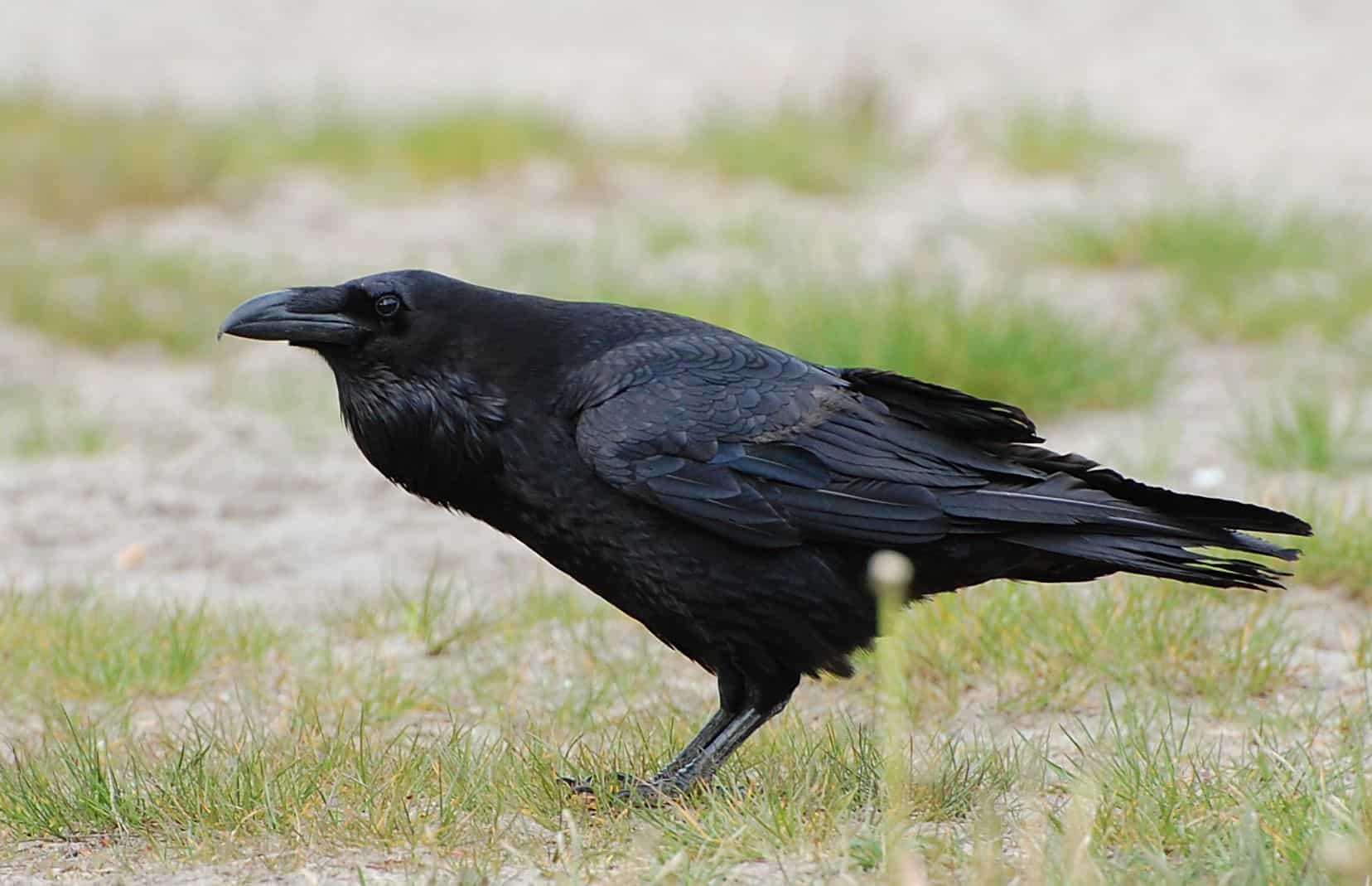
Common Raven (Corvus corax), adult, Berlin, Germany. Photo by R. Altenkamp, Wikimedia Commons
The people who have this spirit animal are messengers, delivering messages or information to others. This can be about mundane things or deeply spiritual. People come to them because of their knowledge and wisdom hoping to get help to transform their lives.
When this bird shows up as a guide in your life, take a moment to pause and carefully consider the messages coming to you. It brings a message of transformation and a dramatic one. Whether that is something about yourself, your life or your surroundings. The message may be difficult to understand at first but there are always subtle clues.
Are you stressed out? Maybe you have something bad or old you need to get rid of? Is there something lurking in the shadows, holding you back? Bring it out into the light and get rid of it.
It brings a lesson of using your time wisely (i.e. stop procrastinating). Another lesson is to stay true to your voice, to who you are. Don’t give promises or divulge secrets lightly. The raven is a secret-keeper, hold onto yours. Express yourself and speak your truth but also make sure you listen carefully.
That’s all for the Raven
If there’s a particular animal you want me to check the myths and folklore for, leave your suggestion in the comments.

